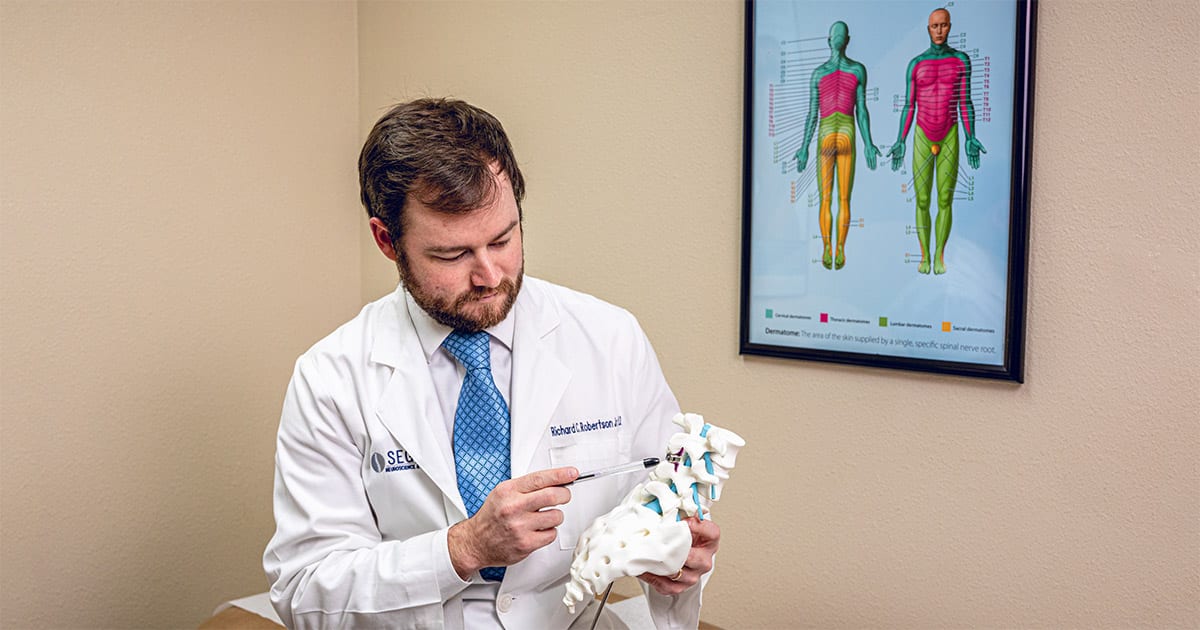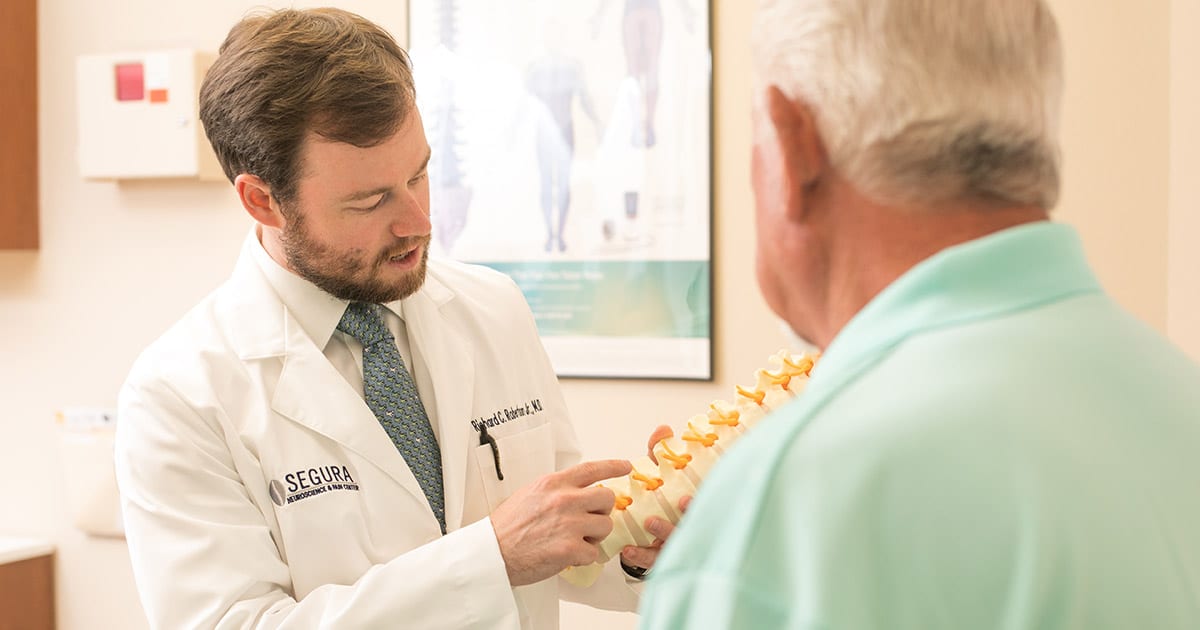
Dr. Robertson Answer the Question:
"What is Chronic Pain?"
The Different Types of Pain
Why is Chronic Pain So Hard to Treat?
“Pain frequently moves from place to place without explanation. It affects every aspect of a person’s life. It also affects loved ones lives. When people have chronic pain, it is often associated with underlying side effects like depression and anxiety,” Dr. Robertson says. “People become frustrated because they can’t do what they want, and don’t see a future without pain.” Modern pain management addresses these issues by focusing on a broad spectrum of the body, taking in neurological, musculoskeletal and psychological factors.
Our type of holistic treatment requires patience. “While chronic pain can be a result of an injury, generally it has been developing over a long period of time – often even before symptoms appear – and, therefore, may take some time to determine the exact cause and appropriate treatment,” Dr. Robertson adds. “Sometimes there is no cure or quick fix to totally alleviate pain, and this makes it challenging as well. The focus is to control the pain to allow the patient to improve their quality of life and function better.”
When to See a Pain Specialist

Misconceptions About Pain Management
The most common misconception about pain management revolves around the use of pain medicine, or narcotics, like opioids, to treat chronic pain. Fortunately, modern pain management has evolved significantly from what it is commonly believed to be. While these may be utilized in certain situations the majority of chronic pain management involves using non narcotics and minimally invasive procedures, or injections, to diagnose and treat pain generators.
Frequently people believe they can wait out pain are unfortunately often wrong. “They fear doing anything that might make their pain worse,” Dr. Robertson says. “As a result, they avoid activities they love and doing what they want and suffer longer.” Others may worry about the risk of long-term medications, including opioids, but innovative new approaches are looking beyond drugs. “Interventional procedures produce real results without the use of pain medications,” Dr. Robertson adds.
"Patients often fear doing anything that might make their pain worse. As a result, they avoid treatment and suffer much longer than they would otherwise."Richard C. Robertson, Jr., MD
Getting the Best Results
The best thing patients can do, according to Dr. Robertson, is to get your pain evaluated. Be honest and open with yourself and your healthcare provider. Be as specific as possible when describing your pain. What causes your pain? Where does it hurt? How long has it been going on? Does anything make your pain better? Worse? Is it a sharp stabbing pain, dull, achy, burning, tingling?
“If I don't know there is a problem,” Dr. Robertson says, “I can’t fix it.” Patients also need to closely follow their rehabilitative regimen. Getting necessary tests, going to follow up visits, participating in therapy, and sticking with the treatment plan gives someone the best possible results.
“The best thing patients can do is to be honest with me. If they don't tell me what's wrong I can't fix it.”Richard C. Robertson, Jr., MD
Evaluate, Diagnose and Treat Your Pain
This website is not intended to provide specific medical advice, medical diagnosis, opinion, treatment or services to you or to any other individual. Through this website and links to other websites, Segura Neuroscience & Pain Center provides general information for educational purposes only. The information provided in this site is not a substitute for medical or professional care. You should not use this information in place of the advice of your physician or other healthcare provider. Segura Neuroscience & Pain Center is not liable or responsible for any advice, course of treatment, diagnosis or any other information, services or product you obtain through this website.
